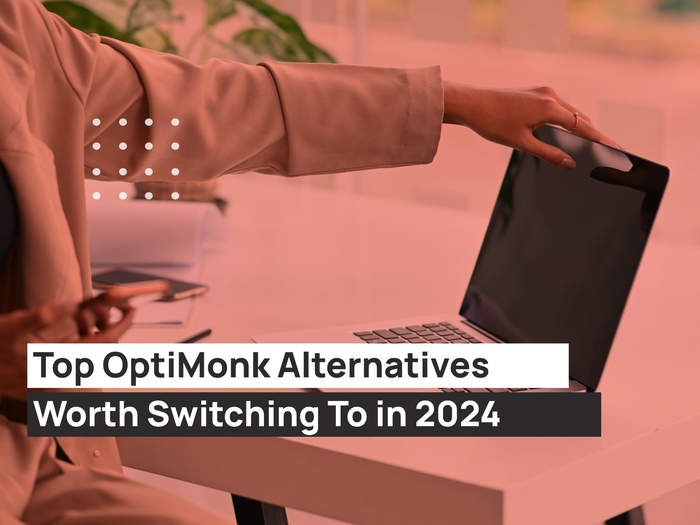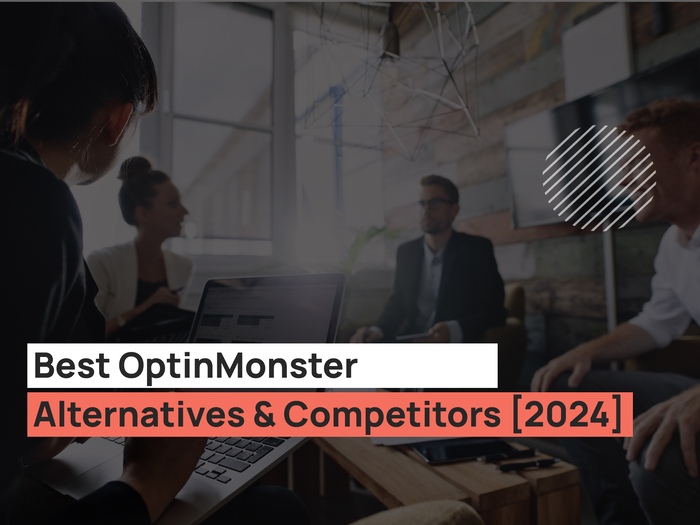Building an eCommerce website for your business is essential in today’s time. Even more so, with the arrival and destruction caused by COVID-19 to the existing structures of the market.
Many businesses have thrived without the need for an eCommerce website for their business, for many reasons – steady revenue, loyal clientele, persistence to stick to the old methods of doing business, etc.
Sadly, that formula won’t work anymore. COVID-19 was followed by nationwide lockdowns; closure of malls, shops, other businesses; and access was limited. Yet, access to online e-commerce stores wasn’t.
In fact, e-commerce sales thrived. According to Forbes, online year-over-year revenue growth was up 68% for U.S. retailers in mid-April, which surpassed January’s peak of 49%, from early this year.
Nobody knows when this pandemic will be over, and more and more evidence is piling up to support the fact that by the time it does get over, we’ll all come out of it as different people and perhaps, with different habits.
One of those might be our increased reliance on e-commerce websites. So, in order not to get left out from the future of shopping, you need to learn how to build an eCommerce website.
Do you have to learn how to build an eCommerce website from scratch? Maybe. Is it important for anybody wanting to venture into eCommerce to know how to build an eCommerce website? Absolutely. How much is an eCommerce website to build? Well, that depends on your needs and requirements.
So, if you have questions like this, you need to keep reading in order to find more detailed answers.
What Is Ecommerce?
Ecommerce, or electronic commerce, is the buying and selling of goods and services through the internet, and the transaction of money and data which are needed to achieve it. It can refer to the online selling of physical products but it isn’t limited to just that.
It can also be referred to as the selling of services through digital means. Simply put, any online commercial transaction is facilitated with the help of the internet.
Ecommerce Models: Building an eCommerce site sucessfully
There are multiple types of eCommerce models that can help you understand what type of model you need to adopt in order to best facilitate your business. This way, before even building an eCommerce website, you can ensure seamless integration of your current business model with that of its online counterpart.
Mainly, there are four types of eCommerce models:
1. Business to Consumer (B2C)
This is one of the most common models of eCommerce and one that most consumers would already be acquainted with. Think, Amazon. It deals with online purchases between a business and a consumer. It works just like it would in a normal retail store where you go in, see a bunch of different sections, choose something you like, and purchase it at the counter.
But instead of doing it all in person, you do it online.
2. Business to Business (B2B)
B2B model allows businesses to provide resources of all kinds to other businesses in order for them to grow and operate. It could include the sale of raw materials, finished parts, services, and consultancy, etc.
There are no specific categories – the possibilities are limitless. Whether you’re looking for a B2B supplier in textile, automobile manufacturing, telecommunications, pharmaceuticals, logistics, construction, computer hardware and software, etc.
You could choose to serve in any kind of industry and make a niche for yourself by selling it to other businesses. Needless to say, it varies vastly from B2C as you don’t directly sell to the consumers – you sell to companies who then sell to consumers.
3. Consumer to Consumer (C2C)
This eCommerce model deals with the transactions that take place between private individuals. It could be goods or services, or both. Platforms like Craigslist, eBay, Airbnb, Fiverr, or Upwork – they’re all C2C platforms.
It’s simple – one person has a service or good that they’d like to sell. They put an ad out there for people interested in that particular good or service. Then, those who’re interested in what’s being offered, engage with the seller and buy it on mutually agreed terms.
4. Consumer to Business (C2B)
C2B is quite an interesting model. Especially, in today’s time, as it allows businesses and consumers alike, to obtain value from each other. How so, you may ask? Well, it’s quite simple, really.
The businesses profit when the consumers name their own price or share their data willingly. The consumers, on the other hand, profit from direct payment, products, and services that are either free or provided at a cheaper price.
Let me give you an example: Suppose a cosmetics company is introducing their new make-up line. They reach out to some beauty bloggers on Instagram and agree to either give them the make-up kits for free or give them money in exchange for a make-up tutorial made with their new kit on their beauty blog.
This is a fee-based model within the bigger C2B model.
For an online store to be effective in the eCommerce business world, it has to include some important functionalities in the storefront as well as some marketing procedures. This applies to large companies as well as small businesses. Experts rank the Top eCommerce Development Companies by expertise, industry focus and reviews. These firms work to understand each client’s specific business objectives and select the best developers from their companies to meet customer needs.
Some of these functionalities and marketing procedures are:
- Social media integrations
- Email marketing campaigns
- SSL Certificate
- Google Analytics integration
- Customer support platform
- Responsive payment processor
- Different payment methods
- Marketing tools
- Optimized product descriptions
- Optimized product pages
- Attractive product images
All of these eCommerce solutions have to be present in a well-designed online store. They will help you gain new customers and retain old customers as well. Also, you can improve your online presence with the right marketing efforts.
Ecommerce Categories
There is a wide variety of eCommerce categories that you can operate in. Below are some examples:
1. Retail
When you sell a product directly to a customer, without an intermediary. E.g. Amazon.
2. Wholesale
When you sell products in bulk to other businesses or retailers who then sell them directly to the final consumers. E.g. Alibaba.
3. Dropshipping
In this category, you sell a product that is manufactured and shipped by a third party to the consumer.
4. Crowdfunding
When consumers fund a product’s development by chipping in with money in order to collect enough to bring the product to the market. E.g. Kickstarter, Indiegogo, etc.
5. Subscription
This is a recurring purchase for a product or service which happens at regular intervals till the time the consumer feels the need to cancel it. E.g. Netflix, Amazon, Spotify.
6. Physical Products
These are tangible goods that are physically shipped to consumers as soon as the sales are made.
7. Digital Products
These are products or services that you buy online. E.g. Udemy, Coursera.
8. Services
When a service is provided in exchange for money. E.g. Upwork, Fiverr.
So, now that you know everything about eCommerce and the categories that it has to offer, you’re going to be in a much better position to understand what suits your needs and what category your business fits perfectly in when building an eCommerce website.
So, let’s start off and build the perfect eCommerce website for your business.
Steps Towards Building an Ecommerce Website: The Bottom Line
1. Domain
A domain name is the number one most important thing that you need to obtain when building an eCommerce website. It’s the digital address for your business. You need to be careful in selecting one as it has to be related to the name of your business and the niche that you’re going to be operating in.
Let’s suppose you want to start a clothing eCommerce store and the name of your brand is Hip and Trendy.
What we’ll do now, is look for a domain name that is perfectly in sync with your brand name. For this purpose, we’ll go choose GoDaddy.
Let’s take a look at the picture above.
When we go to Godaddy.com, we can write the name of the domain that we want, in their search bar (hip and trendy). The website then tells us if our desired domain is available or not and if not, gives us other options to explore.
In this case, hipandtrendy.com is available but for a premium price. Clearly, not worth pursuing unless your brand absolutely requires this domain name and your pockets can afford it. The other options are also visible, but they’re not what we want.
So, we’ll try to look for a name that has our brand name and also clearly implies what the eCommerce store will be about: So, hipandtrendyclothing.com, is available. There are some other options below it too, that you can explore if you want to, but I’m satisfied with the domain that I’ve found.
So, once you find the right domain, you’ll add it to the cart, add the other services and hosting options that you feel are needed, and voila – you’ve cleared the first stage towards making your eCommerce website.
2. Web Development
A good web design development is the most important person that you need when building an eCommerce website – building an eCommerce website is not easy. Not only do they serve as the architects for a website but also as the constructors who build everything according to your specifications and give their blood, sweat, and tears to make it turn into a reality.
Some business owners decide to use platforms like Wix, which really won’t give you the best results. You need a high-quality eCommerce website builder for the most challenging parts like the payment processing system integration. A regular store builder such as Wix is not optimum for this purpose.
The cost of hiring a good web developer is obviously increased when added to the average cost to build an eCommerce website. But investing in the best option will give you the best results, undoubtedly.
As mentioned, this is an extremely crucial step in the process of making an eCommerce website. Therefore, you need to make sure that the person you entrust with this job is qualified, experienced, and reliable.
You may not know much about the web development space but that doesn’t mean you should hire just about anybody who claims to be one. Ask your friends, colleagues, other people who’ve had some web development work done (I’m sure they won’t be difficult to find), and find someone who has a good portfolio, solid reviews, an admirable work ethic, and consistency in the quality of their delivery.
Options
Here are some good options that you could take a look at when you’re thinking of building an eCommerce website:
- Seattle Web Design Agency
- Boston Web Design Agency
- Phoenix Web Design Agency
- Nashville Web Design and Development Company
Once you do find a good developer, you need to sit down with them and help them understand what it is exactly that you’re looking for and what you need the website to do.
The web developer will give you/show you options, ask questions and provide solutions, and basically construct a complete roadmap, along with your help.
You need to be in constant touch with the person (unless you trust their vision and them completely) and work as a team. It wouldn’t be wrong to say that you need to be SMART about your goals with the development of the website – Smart, Measurable, Attainable, Relevant, and Time-bound.
3. Business Registration and Other Legal Work
Now, just because you’re going to be operating an online business, doesn’t mean you’ll be excluded from the legal obligations and requirements that are required of any business to the state.
If you’re an already established business, your ways of handling this might be slightly different, depending on your location. Maybe you won’t need to do more registrations and maybe you might need to do some (it’s better if you check your state’s laws regarding this).
If you’re not an already established business and the eCommerce store is going to be your first foray into the business side, you might need to do quite a bit of work to get the ball rolling in order to prevent any legal issues in the future.
You need to register your business. You can do that by hiring a good local attorney who’ll help you with it. The cost will vary depending on your choice of attorney and other fees but trust me, the cost now is better than the cost that legal issues and other problems will cause in the future.
Hire a good attorney and make sure you cover all your basics. Ask questions and fulfill every legal requirement needed of you.
4. Web Hosting Platform
I won’t bore you with irrelevant and complicated details about what a w platform is. I’d rather give you a simplified answer. When you have a website (your eCommerce site) that you want to publish on the internet, you hire a web hosting platform that stores your website on their databases (servers) so that all your potential customers have to do to access your website is type its website address in their browser’s search bar and everything will be loaded for them.
So, now that you understand what a web hosting platform actually does, you might’ve also gotten a slight idea about how big a difference a good or bad web hosting platform can make to your eCommerce website’s accessibility, functionality, cost, etc.
(We’re only going to be covering the top three choices for now so there’s not going to be any “how to build an eCommerce website with drupal” mentioned in this guide.)
The top choices that many web developers must be familiar with are WooCommerce, Shopify, and BigCommerce.
| Shopify | WooCommerce | BigCommerce | |
| Cost (Monthly) | $9$29$79$179 | Free | $29.95$79.95$199.95 |
| Limitless Product Features | No | Yes | Yes |
| Mobile Commerce | Yes | Yes | Yes |
| In-built Marketing | Yes | Yes | Yes |
| User-friendliness | 9/10 | 8/10 | 10/10 |
| Total Score | 9/10 | 8/10 | 10/10 |
If you want more specific information about all three of these platforms, we’ve got that for you too:
Shopify
It is one of the biggest and most well-known eCommerce platforms in the world. One of its many plus points is the ease of use that it has to offer. Moreover, it serves as a one-stop-shop for all your eCommerce needs.
Building an eCommerce website with Shopify is tremendously easy. Pick a template that you like, add products to your chosen categories, customize at your own will, and your website will be live right away.
Whether it’s web hosting, caching, or other security features – Shopify makes it a hassle-free affair for business owners.
WooCommerce
An open-source plugin, designed for eCommerce, built for WordPress – it allows you to monetize any WordPress website that you already might have and gives you eCommerce-related features. (if you’re thinking of building an eCommerce website using WordPress, here’s how)
The difference between all three of these platforms (Shopify, WooCommerce, and BigCommerce) is the fact that WooCommerce is basically a plugin – a free shopping cart plugin.
When you use WooCommerce, you get to get the best of both worlds – WordPress’ incredibly sophisticated content management system (CMS) and WooCommerce’s phenomenal eCommerce features.
Moreover, since it is open-source, you can customize it according to your own needs and specifications.
BigCommerce
Another great option, BigCommerce helps you set up an eCommerce store with ease. It is also cloud-hosted, like Shopify – therefore, armed with multiple features, templates, and customization options that will work well for beginners and professionals.
Since it runs on an open platform, you can build on top of their APIs and give birth to many other commerce apps and experiences on other platforms.
So, now that you’ve understood the various aspects of these options, you’d be better able to distinguish between them and understand what would suit your needs best.
Also, you don’t have to just stick to these – there are multiple other options out there that you could explore.
5. Theme
Your website theme describes the mood and tone of your store. It describes your niche and your product’s attractiveness can be enhanced or diminished by your choice of theme. Therefore, you need to make sure you choose one that fits well with the target audience that you have in your mind for your products. This is important when building an eCommerce site of any kind.
It should invite them in, not repulse them into closing the website.
You could build a custom-made theme for your website, absolutely. But that would take a lot of time and money. Go for the already available options out there. There are thousands of websites on the internet on which many developers have already designed and uploaded eCommerce website themes.
Why don’t you go and explore those? Maybe you’d find something that works for you.
Websites like ThemeForest offer a great variety of options.
6. Take Your Website Live!
When you’ve thought hard about this business idea of yours and committed yourself to it, you need to go live with your website. You might not have any products to list yet or even a complete website but you need to go live – in a way.
This will help you create legitimacy. When you’re negotiating deals with vendors or trying to form partnerships with people, you need to be able to show something credible for it – your website. You don’t need to have a fully designed and ready-to-go website for that.
Just have an ‘About me’ page created for the homepage and a few other details.
7. Payment Gateway
This is a crucial part of setting up an eCommerce website. Whenever you’ve shopped online on Amazon or eBay, or any other platform, you must have always seen multiple payment options, right. PayPal, Stripe, etc.
But credit cards, mobile payments, and recurring bills are even more important.
You need to provide proper payment gateways and their availability is crucial for your business, especially when you’re just starting out. Websites like authorize.net or 2Checkout can help you out with it.
A secure checkout process, Privacy Policy, Return Policy, shipping and delivery options, customer service helpline, and proper email addresses – these are all tremendously vital for you to acquire the approval for credit card processors and payment gateways.
Therefore, you need to make sure you’ve got all your bases covered.
8. Google Shopping and Facebook Product Catalog
Search Engine Optimization or SEO, is going to be extremely important for your business to thrive. You need to deploy the right tools in order to rise up on Google’s ranking so that whenever someone enters or searches for keywords that are relevant to your business, your website pops up immediately and any pictures or details related to it are displayed.
It’s not an easy job and it will most obviously take a lot of time, so you can’t really rush it. What we’d suggest, however, is that you find the right set of people who you can make in charge of this particular task and make an ongoing plan for how you want to execute it.
Perhaps, a good eCommerce marketing agency might help.
But while you’re planning that, it would be good to get started on your product catalog while your website is in its finishing stages.
A Google Shopping Campaign is essential for your business if you want the images of your products to come up whenever keywords associated with them are searched.
You can get more information about Google Shopping here.
Lastly, you could put this very data to use on Facebook as well, through their merchant center and upload it to their product catalog – you’d kill two birds with one stone.
9. Packaging + Shipping + Warehousing
You need to figure out how you’re going to store your products, package them, and ship them – all before you officially launch your website. You can’t leave any of these important tasks to the last minute.
Your inventory needs to be in perfect and optimum conditions. Therefore, you need to make arrangements for storing them. You can use a warehouse to store the products or dropship them – whatever works best for you.
Moreover, what shipping methods are you going to use, and what companies might work best for you? FedEx, UPS, etc.?
Creative candle packaging, for example, needs to be given a lot of thought, too. How do you want the customers to get their first look at your product?
You need to answer all of these questions for yourself and make these important decisions.
10. Finally, (Really) Go Live!
Now that you’ve covered ways of building an eCommerce website, step-by-step, you can finally go live with your eCommerce website and start selling the amazing products that you have in store for the world.
If you want your online shop to be a big success you need great web design. eCommerce website designers build beautiful websites that are easy to use for you and your customers.



